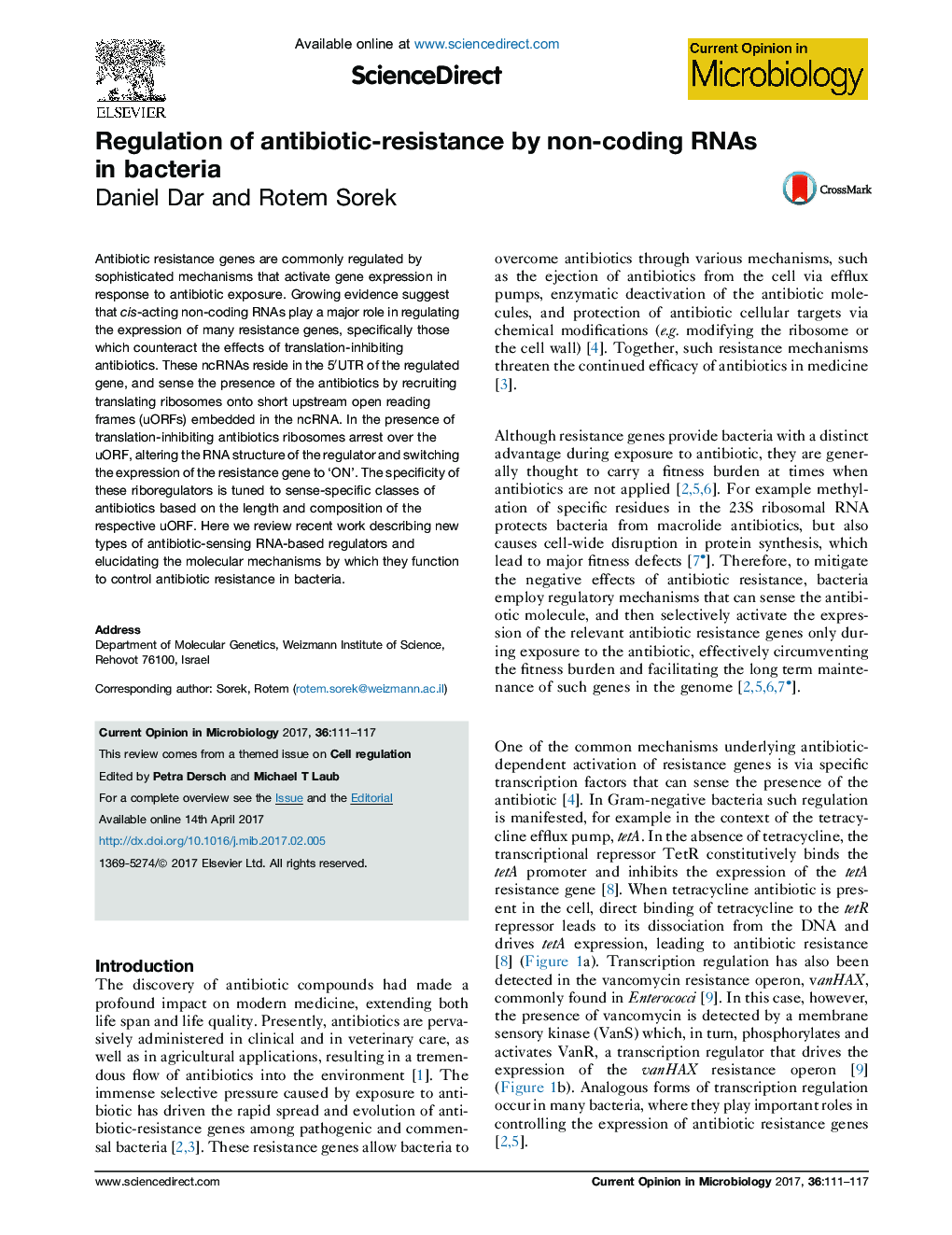| Article ID | Journal | Published Year | Pages | File Type |
|---|---|---|---|---|
| 5671755 | Current Opinion in Microbiology | 2017 | 7 Pages |
â¢ncRNA-based regulators of antibiotic resistance are common in human associated bacteria.â¢Most riboregulators sense ribosome-inhibiting antibiotics by directly measuring ribosome activity.â¢Antibiotic-dependent riboregulators can be quite specific to antibiotic classes and can evolve different specificities through mutation.
Antibiotic resistance genes are commonly regulated by sophisticated mechanisms that activate gene expression in response to antibiotic exposure. Growing evidence suggest that cis-acting non-coding RNAs play a major role in regulating the expression of many resistance genes, specifically those which counteract the effects of translation-inhibiting antibiotics. These ncRNAs reside in the 5â²UTR of the regulated gene, and sense the presence of the antibiotics by recruiting translating ribosomes onto short upstream open reading frames (uORFs) embedded in the ncRNA. In the presence of translation-inhibiting antibiotics ribosomes arrest over the uORF, altering the RNA structure of the regulator and switching the expression of the resistance gene to 'ON'. The specificity of these riboregulators is tuned to sense-specific classes of antibiotics based on the length and composition of the respective uORF. Here we review recent work describing new types of antibiotic-sensing RNA-based regulators and elucidating the molecular mechanisms by which they function to control antibiotic resistance in bacteria.
